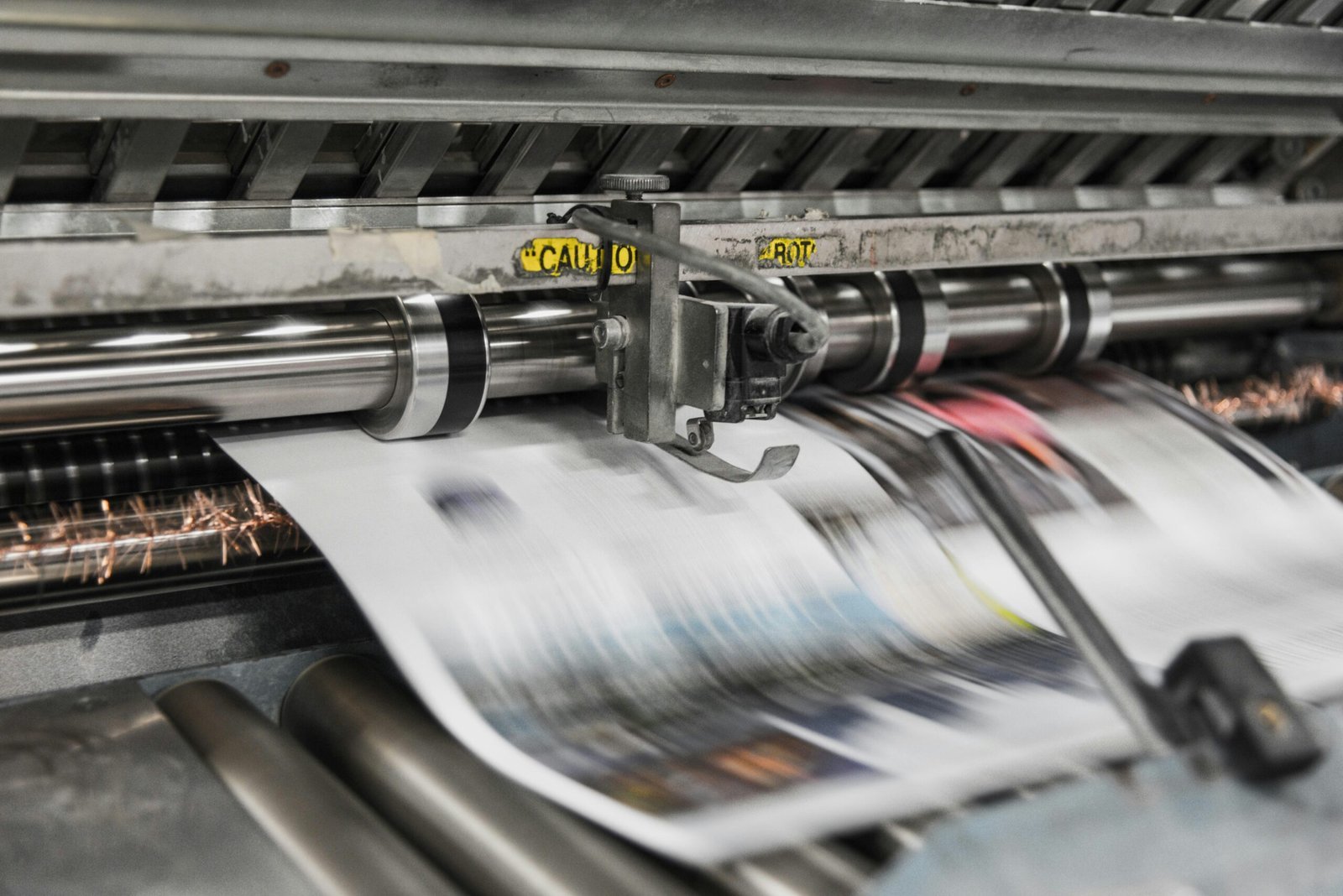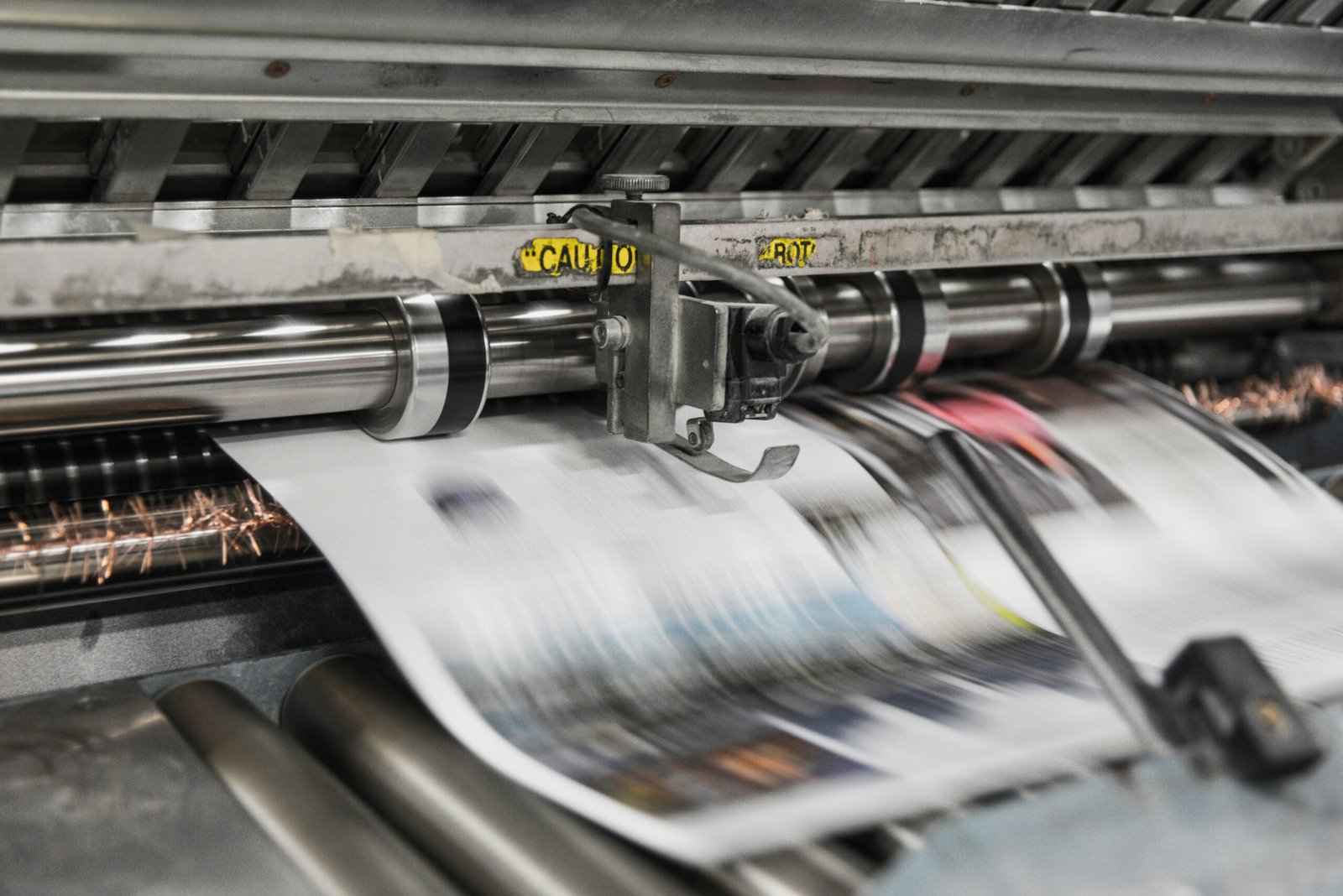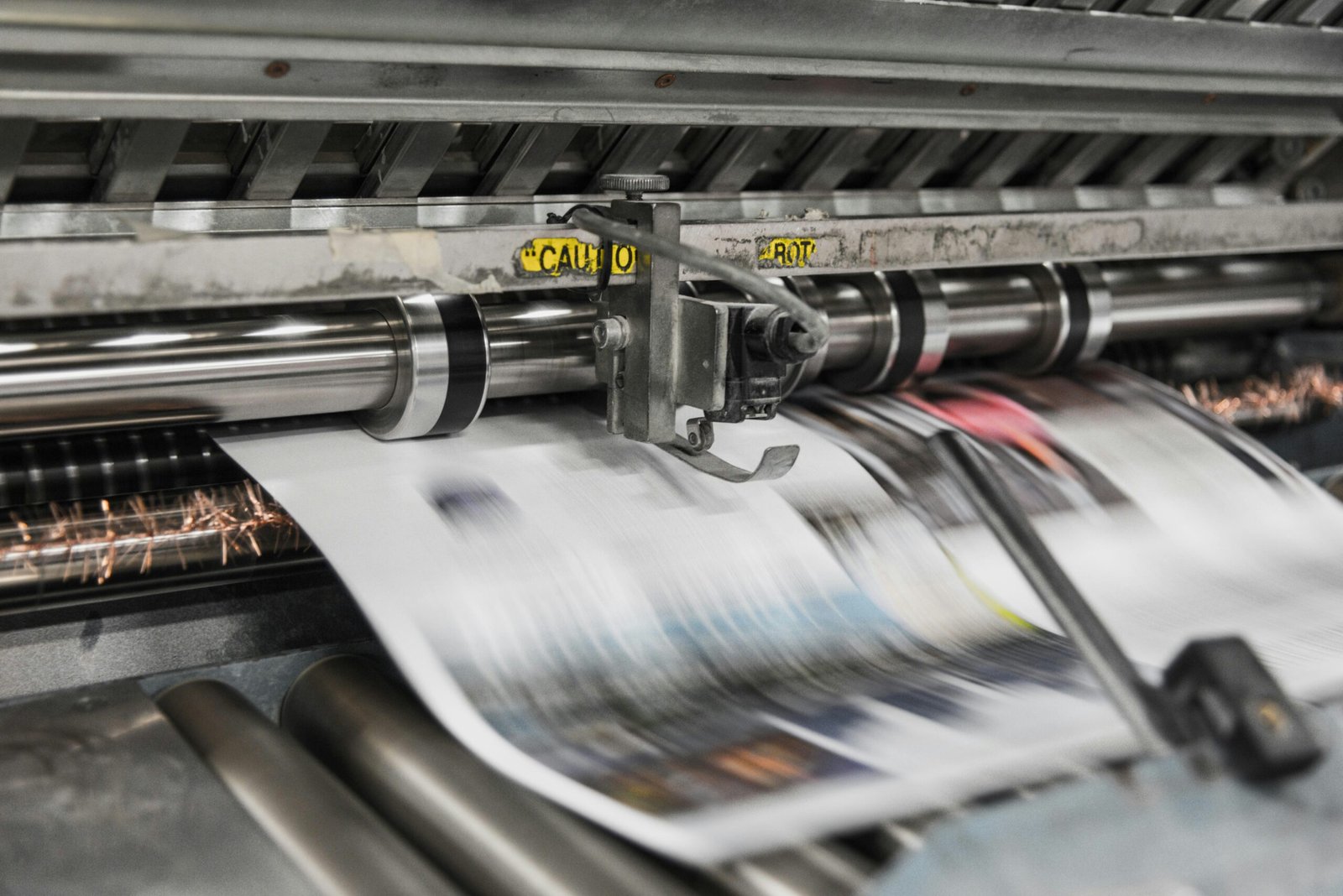
Introduction to Last-Minute Printing
In today’s fast-paced environment, the need for quick and efficient last-minute printing has become increasingly relevant. As deadlines tighten and the demand for immediate solutions rises, many individuals and businesses find themselves in situations requiring urgent print services. Last-minute printing encompasses a broad range of needs, from business presentations and event invitations to promotional materials and marketing collateral. The pressure to deliver high-quality prints, even under tight time constraints, highlights the necessity of understanding how to effectively navigate this urgent demand.
Common scenarios that necessitate last-minute printing include corporate meetings where polished presentations are critical for making an impression, or social events where invitations must be sent out at the eleventh hour. In such cases, the ability to produce well-crafted printed materials swiftly is essential. As organizations strive to maintain professionalism, the expectation for quality prints does not diminish, even when time is of the essence. This is where reliable printing services come into play, providing an avenue for individuals and businesses to source high-quality prints quickly, without compromising on the output standard.
The importance of familiarity with last-minute printing solutions can not be overstated. An understanding of available printing options and the right providers can significantly alleviate the stress involved in tight timelines. Moreover, leveraging technology—such as online printing services—has revolutionized access to last-minute printing, allowing users to upload designs, select formats, and receive prints on the same day or within hours. Ultimately, equipping oneself with knowledge about last-minute printing strategies enhances the ability to achieve aesthetically pleasing results, irrespective of time limitations.
Understanding Your Printing Options
The world of printing is diverse, with various methods available to cater to different needs and preferences. When faced with urgent printing requirements, it is vital to understand the printing options at your disposal to make an informed decision. Two of the most common printing methods are digital printing and offset printing. Each has its advantages and limitations regarding speed, quality, and cost-effectiveness.
Digital printing stands out for its speed. This method employs digital files to produce prints directly without the need for intricate setups. Consequently, it is ideal for last-minute projects. Digital printing is known for its quick turnaround time, making it a preferred choice when time is of the essence. Whether you require flyers, brochures, or business cards, digital printing can efficiently accommodate smaller quantities while maintaining a high level of detail and color accuracy.
On the other hand, offset printing is traditionally favored for large-volume orders due to its cost-efficiency in producing significant quantities. This method utilizes plates to transfer ink onto a medium, resulting in high-quality prints with exceptional color fidelity. However, it requires more setup time and is less suitable for urgent printing needs unless one can anticipate high demand in advance. For those who are prioritizing quality over time, offset printing provides superior results, particularly for professional-looking publications.
Other options, such as large format printing, screen printing, and flexography, also exist for specific projects. As a potential print buyer, assessing your needs is crucial—ask yourself how fast you need the prints and what quality you desire. By understanding these various printing options and their specific characteristics, you can choose the optimal method tailored to your urgency and desired outcome.
Choosing the Right Design Software
When it comes to last-minute printing projects, the choice of design software can significantly impact your ability to produce high-quality prints quickly. There are various options available, each catering to different skill levels and project requirements. For those who prefer user-friendly interfaces, programs like Canva and Adobe Spark stand out as excellent choices. These platforms offer a plethora of templates for various print materials, from business cards to flyers, making it easy to customize designs without investing extensive time in learning complex software.
Canva, in particular, is renowned for its drag-and-drop functionality that allows users to experiment with colors, fonts, and layouts seamlessly. This simplicity is ideal for last-minute designs, as users can quickly modify existing templates or create new ones from scratch. Furthermore, Adobe Spark has similar capabilities, coupled with the added benefit of integration with other Adobe products, which can be beneficial for those already familiar with the Adobe ecosystem.
On the other end of the spectrum, more advanced software such as Adobe Illustrator presents a steeper learning curve but offers unparalleled flexibility and precision. Illustrator is particularly advantageous when custom design elements are vital to your project. For users who are proficient with this software, quick modifications can enhance visual appeal effectively, albeit requiring more time to master the tools available.
Regardless of your choice, incorporating pre-made templates and leveraging design assets can save valuable time. Familiarizing yourself with shortcuts and tools available in your selected software can also streamline your design process. In conclusion, by selecting the right design software suited to your skillset and project demands, you can achieve high-quality prints with efficiency, ensuring that your last-minute printing requirements are met without compromise.
Selecting High-Quality Paper
When it comes to last-minute printing, the selection of high-quality paper plays an essential role in the overall impact of your printed materials. The type of paper can significantly influence not only the final appearance but also the durability and tactile experience of the prints. Understanding the various options available is crucial for achieving the desired results in a time-sensitive scenario.
There are several categories of paper that one can choose from, including glossy, matte, and textured varieties. Glossy paper is often favored for photographs and vibrant graphics, as it enhances color saturation and provides a smooth finish. This type of paper reflects light effectively, making the colors appear more vivid and sharp. Matte paper, on the other hand, has a non-reflective surface that reduces glare and is typically preferred for documents where readability is paramount. It absorbs ink, resulting in a softer feel, which can be particularly appealing for presentations or formal documents.
In addition to finish, the weight of the paper is another critical factor to consider. Paper weights vary significantly, typically measured in grams per square meter (gsm). Heavier paper, such as 200gsm or more, is ideal for high-quality prints as it boasts sturdiness, contributing to a more professional presentation. A thicker stock is less prone to bending or tearing and provides a substantial feel that can enhance the perceived value of the printed materials. For optimal color reproduction and overall quality, it is advisable to utilize paper specifically designed for printing, as it is engineered to handle ink absorption effectively.
Recommendations often lean towards brands known for their reliability in producing high-quality prints. Whether you choose a matte or glossy finish, opting for an appropriate weight and texture will undoubtedly elevate your last-minute printing results, ensuring that your documents or marketing materials leave a lasting impression.
Tips for Effective Last-Minute Design
Creating effective designs in a limited timeframe can be challenging, but applying specific strategies can enhance efficiency while ensuring high-quality prints. One of the foremost considerations is the use of a well-defined color scheme. Selecting a palette of two to three primary colors minimizes decision-making time and helps maintain coherence in the design. Utilizing tools like Adobe Color or Coolors can expedite this process and provide harmonious color combinations that resonate with your intended audience.
Another critical element is the layout. A clean and organized layout not only enhances visual appeal but also improves readability. To achieve this quickly, consider employing grid systems. Grids provide a structured framework that can streamline design decisions, allowing you to place text and images in a visually pleasing manner without excessive adjustments. Additionally, sticking to basic design principles such as alignment, balance, and contrast will help ensure professional-looking prints without overcomplicating the process.
It is also advisable to focus on key design elements and avoid unnecessary embellishments. Emphasize essential information by using large, bold fonts for headlines, while maintaining legibility for body text. Aim for a font pairing that complements your design’s tone—combining a sans-serif font for modernity with a serif font for tradition can yield striking results. Also, ensure that images are high-resolution; low-quality visuals can detract from the overall impact, regardless of how well the text and layout are executed.
Lastly, make use of templates whenever suitable. Numerous online resources provide customizable design templates that can save both time and effort. By starting with a pre-designed framework, you can modify elements to suit your needs, allowing for a fluid transition from concept to print-ready material. By integrating these practical tips, the design process can be expedited effectively, satisfying the constraints of last-minute printing without sacrificing quality.
The Importance of Proofreading
Proofreading is a crucial step in the process of preparing any design for printing. It serves as a final quality check, ensuring that the printed material reflects the intended message and professionalism of the brand. Failing to proofread can lead to glaring errors that diminish the quality of the final product, impacting both aesthetics and credibility. Therefore, it is imperative to incorporate an efficient proofreading strategy into the last-minute printing process.
When proofreading designs, several factors should be taken into account. First and foremost is the text. Spelling mistakes, grammatical errors, and improper punctuation can distort meaning and create an unprofessional impression. A checklist for text errors should include verifying spelling, ensuring consistent font sizes and styles, and checking the tone and clarity of the message.
Next, the quality of images cannot be overlooked. Low-resolution images can lead to blurry or pixelated prints, which detract from the overall quality. It is advisable to confirm that all images used are of high resolution and are appropriate for the intended print size. In addition to image quality, alignment issues should also be examined. Misalignment can disrupt the design’s visual flow, making it appear chaotic or unbalanced. Careful checking of margins, spacing, and overall alignment is essential.
Errors in any of these areas can lead to costly reprints or damaged reputations. Consequently, taking the time to proofread contributes significantly to the overall success and effectiveness of printed materials. By committing to meticulous proofreading, one can ensure that the final prints are not only visually appealing but also convey the intended message accurately and professionally.
Finding the Right Printing Service
In today’s fast-paced world, the ability to locate a reliable printing service quickly is crucial, especially for last-minute printing needs. Several factors should be considered when searching for a printing service that can deliver high-quality results within a short timeframe. One of the primary aspects to evaluate is turnaround time. Services that specialize in quick printing often provide clear timelines indicating how soon you can expect to receive your printed materials. Look for companies that have a track record of meeting tight deadlines without compromising quality.
Cost is another important factor to consider. While it can be tempting to opt for the cheapest alternative, it’s essential to ensure that the service you choose provides value for your money. Comparing prices among different printing services can help you determine a fair rate for the quality and speed you desire. Be cautious of hidden costs that may arise during the printing process, such as setup fees or expedited shipping charges.
Customer service is also a key component in selecting a printing service. A responsive and professional team can significantly impact your experience, especially if you have specific requirements or need to make adjustments last minute. When contacting potential printing services, take note of how promptly and effectively they address your inquiries. Clear communication is vital for conveying your needs accurately, whether you require modifications to a design or have questions about artwork specifications.
By prioritizing turnaround time, assessing costs, and valuing customer service, you can effectively navigate your options and find a reputable printing service capable of completing last-minute jobs without sacrificing quality. This approach not only ensures your printing needs are met efficiently but also enhances the likelihood of satisfactory results.
Using Online Printing Services
In recent years, online printing services have gained immense popularity, particularly for individuals and businesses requiring high-quality prints on a tight timeline. One of the most significant advantages of opting for online printing is the ease with which users can upload their designs. Most platforms feature user-friendly interfaces that allow for straightforward file uploads, enabling clients to initiate their printing jobs quickly. This convenience is particularly beneficial for last-minute projects, where time constraints are a primary concern.
Another notable benefit is the variety of expedited delivery options provided by these online services. Many companies offer same-day or next-day delivery, which is essential for clients needing prompt results. However, it is critical for users to review the specific timelines as they may vary based on the complexity of the print job and the service provider used. Additionally, certain online services allow clients to track their orders in real time, further enhancing the overall printing experience.
While there are numerous benefits, it is vital to acknowledge potential drawbacks. Quality can be inconsistent among different online printing services, so thorough research, including examining customer reviews, is essential. These reviews can offer valuable insights into the reliability and quality of a service, enabling customers to make informed decisions. Recommendations based on past performance can be critical in selecting a service that meets one’s quality expectations.
Some of the highly-rated online printing services include Vistaprint, Moo, and Snapfish, known for their prompt service and quality prints. By considering these suggestions, customers can effectively navigate the world of online printing, ensuring they receive high-quality results even when working under tight deadlines.
Finishing Touches for a Professional Look
When it comes to enhancing the visual appeal and durability of printed materials, finishing touches play a crucial role. Options such as lamination, binding, and special cutting can significantly elevate the final product, making it more polished and professional. In a situation where time is of the essence, understanding these finishing options can help streamline the decision-making process while ensuring no compromise on quality.
Lamination is one of the most popular finishing techniques employed in last-minute printing projects. By applying a thin plastic film over the printed item, lamination not only protects the print from wear and tear but also adds a glossy or matte finish, enhancing its visual appeal. This is particularly beneficial for marketing materials such as brochures and flyers, which may encounter frequent handling. When time is limited, opting for roll lamination can expedite the process, as it often requires less setup time compared to other methods.
Binding is another essential finishing option. It ensures that multi-page documents appear professionally assembled and easier to handle. Depending on the urgency and intended use of the material, various binding methods—such as spiral, comb, or saddle stitch—can be utilized effectively. For last-minute jobs, quick solutions like thermal binding can be advantageous, providing a clean and professional look within a short timeframe.
Additionally, special cuts, such as rounded corners or unique shapes, can add a distinctive touch to printed items. These customizations can be executed using digital cutting tools, which are becoming increasingly prevalent in modern print shops. However, it is important to communicate with the printer about turnaround times, as some specialized cuts may require additional processing time.
In conclusion, investing time in selecting the right finishing touches can transform a standard print job into a standout piece. Whether it’s lamination, binding, or unique cuts, being informed about these options ensures that even last-minute printing remains of high quality, resulting in a refined and professional final product.




